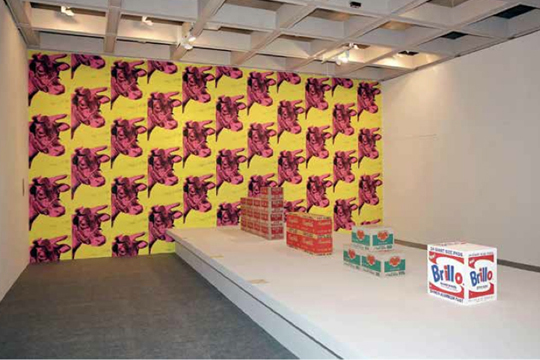ANDY WARHOL: 15 MINUTES ETERNAL
| June 5, 2013 | Post In LEAP 20

What can Andy Warhol do for us? At the Hong Kong Museum of Art, situated by Victoria Harbour, “15 Minutes Eternal” features over 400 works brought from the collection of The Andy Warhol Museum in Pittsburgh. Meanwhile, on the streets surrounding the museum, tourists from all over the world are busy racking up their credit card debt, entranced by the whirlpool of commercial goods on sale at this duty-free port. This consciously pedagogical, large-scale exhibition attempts to arouse the interest of these joyful consumer crowds with classic Warhol statements such as “In the future, everyone will be world-famous for 15 minutes.” However, it is unclear whether anyone has yet picked up on the implied meaning of Warhol’s other famous statement, printed across the exhibition wall, “I am a deeply superficial person.”
But such truisms of the relationship between art and commerce have already been consumed several times over by the Chinese art scene. Warhol, a figure who has been remodeled according to the histories of so many different nations and places, first appeared on the Chinese contemporary art scene just in time for the arrival of the ’85 New Wave and its accompanying value system. In 1985, Robert Rauschenberg had exhibitions in Beijing and Lhasa; this event, in combination with Warhol’s first appearance shortly before, together became the first exposure of Pop Art to artists in China. If it can be said that Rauschenberg’s thought was a timely echoing of the rebellious and libertarian attitudes of the 1980s generation, then the sudden appearance of Warhol was perhaps more equivalent to the sense of unease and vacuity which soon after enveloped the cultural scene. This universal sense of angst carried over to the shattered idealism of the 1990s, and found no source of outlet or relief until the sudden explosion of the commodity economy. But according to a few clear-headed practitioners at the time, everyone was focused on the deconstructive capabilities and cultural significance of Pop Art, and frequently ignored its artistic precedence, thus giving rise to a grave misunderstanding.
At the same time, many different artists either involved or playing key roles in Pop Art never received attention in China; even if Pop Art has left a very deep mark on our history, it has led to lots of work, produced somewhere between blind embrace and genuine sincerity. This period of Pop of China actually made no connection with the work of Warhol, and thus, regardless what exactly this exhibition— also due to travel to Beijing— features, be it his wonderful pen illustrations of the 1950s, his Polaroids from the 70s, any of the “Most Wanted” series, or his collaborations with Basquiat, we still lack sufficient understanding of this workaholic, this pioneer, this artist with a sharp eye and a penchant for self-portraiture. Right now, this lack of understanding seems perhaps more worthy of our examination and reflection than Warhol’s works themselves.
In one corner of the exhibition, inside a long and narrow glass cabinet can be found one of Warhol’s “Time Capsule” series. The cabinet is full of everyday objects used and collected by Warhol while on his travels; in his selection of objects, Warhol was both arbitrary and unsystematic. Through this approach, Warhol ensured his place as Duchamp’s successor, while also magnifying his own artistic intentions. Not only is the work itself profound, it has also saved itself from being turned into a tool for historical critique, which, when first encountered in China, is exactly what Pop Art was subjected to. (Translated by Dominik Salter Dvorak)

